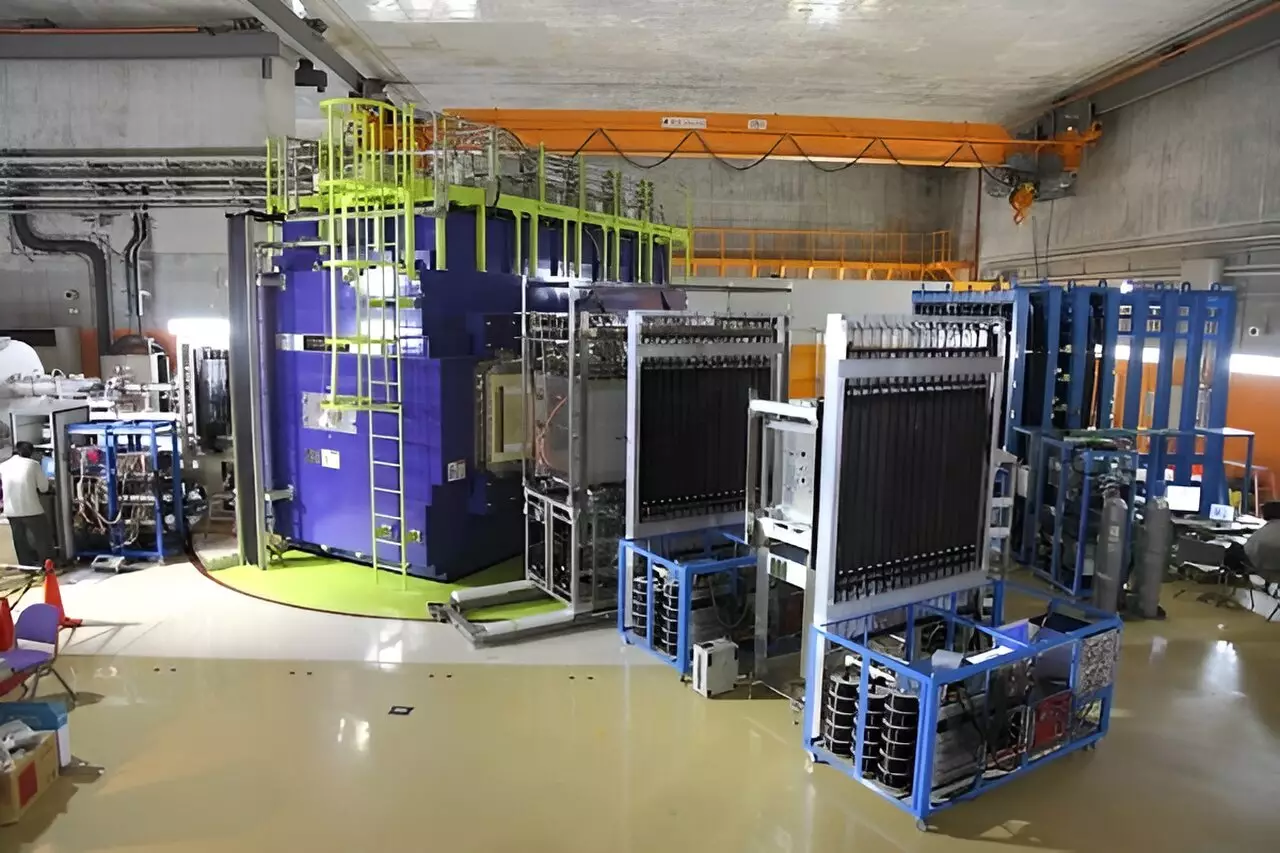Recent advancements in nuclear physics have opened new frontiers for scientific exploration, particularly through the detection of the rare fluorine isotope 30F at RIKEN’s Research Institute for Nuclear and Particle Physics in Japan. Utilizing the sophisticated SAMURAI spectrometer, a collaborative effort known as the SAMURAI21-NeuLAND Collaboration has made significant strides in understanding isotopes that dwell on the periphery of nuclear stability. The implications of this newfound knowledge extend beyond mere curiosity, potentially informing various theoretical frameworks in physics.
The Role of the SAMURAI21-NeuLAND Collaboration
Comprising over 80 researchers from prestigious institutions, the SAMURAI21-NeuLAND Collaboration is a testament to international scientific teamwork. Researchers from RIKEN, GSI-FAIR in Germany, TU Darmstadt, and a host of other facilities pooled their expertise to delve into the neutron separation energies and spectroscopy of the elusive 30F. The findings, reported in *Physical Review Letters*, have raised intriguing questions about the existence of superfluid states in the isotopes 29F and 28O. Julian Kahlbow, the paper’s lead author, emphasized that the team’s primary goal was to explore how extreme conditions influence nuclear structure, particularly regarding the so-called “magic numbers” that have long been a cornerstone in the field of nuclear physics.
The existence of magic numbers—specific numbers of protons and neutrons that result in particularly stable nuclei—has traditionally defined nuclear structure. However, the discovery of isotopes like 29F and 30F challenges these conventions. Kahlbow highlighted the significance of N=20, where a typical energy gap indicates stability within nuclear configurations. However, a phenomenon referred to as the “Island of Inversion” complicates this understanding, depicting a breakdown of these energy gaps in neutron-rich nuclei. The involvement of isotopes such as 28O, celebrated for its “magic” properties, adds further complexity to the landscape of nuclear stability.
Challenges in Measuring 30F
Undoubtedly, the study of 30F presents unique hurdles. This isotope exists only fleetingly—decaying within a span of 10 to 20 seconds—making direct measurements nearly impossible. Researchers have had to ingeniously develop methods to reconstruct information about this elusive nucleus. By examining decay products, particularly through the emission of 29F and a neutron, the researchers pieced together the characteristics of 30F. The meticulous work involved generating an ion beam of 31Ne and targeting a liquid hydrogen source to produce 30F, illustrating the intricate processes employed to navigate the challenges imposed by such a transient particle.
The findings from the 30F measurements serve as a critical point for advancing nuclear theory. Speculations about a superfluid state in neighboring isotopes, 29F and 28O, raise questions regarding the nature of nuclear matter and how it behaves under extreme neutron abundances. The researchers posited that the excess neutrons within these isotopes may exhibit pairing mechanisms akin to Bose-Einstein condensates, leading to entirely new insights into the behavior of matter at extremely low temperatures and densities.
Importantly, the implications of these discoveries extend far beyond just 30F. The exploration into the nature of neutron-rich nuclei could reshape our understanding of the nuclear landscape, particularly regarding the structure of neutron stars and the forces governing them. Kahlbow and his team have already outlined plans to investigate the specifics of neutron correlations and the structure of neutron pairs further, aiming to clarify the potential for these isotopes to manifest as halo nuclei.
As the SAMURAI21-NeuLAND Collaboration continues to delve into the mysteries surrounding 30F, the excitement that surrounds such discoveries is palpable. This research signals a significant step toward understanding the intricacies of nuclear structure and the forces at play in the universe’s most exotic matter. The ongoing research in this largely unexplored quadrant of the nuclear chart highlights the following: while our intrinsic knowledge of nuclear physics has evolved, there exists a rich terrain of discovery yet to be uncovered. Through continued innovation, collaboration, and experimentation, the path forward may lead to unexpected revelations that broaden our comprehension of the physical universe.

